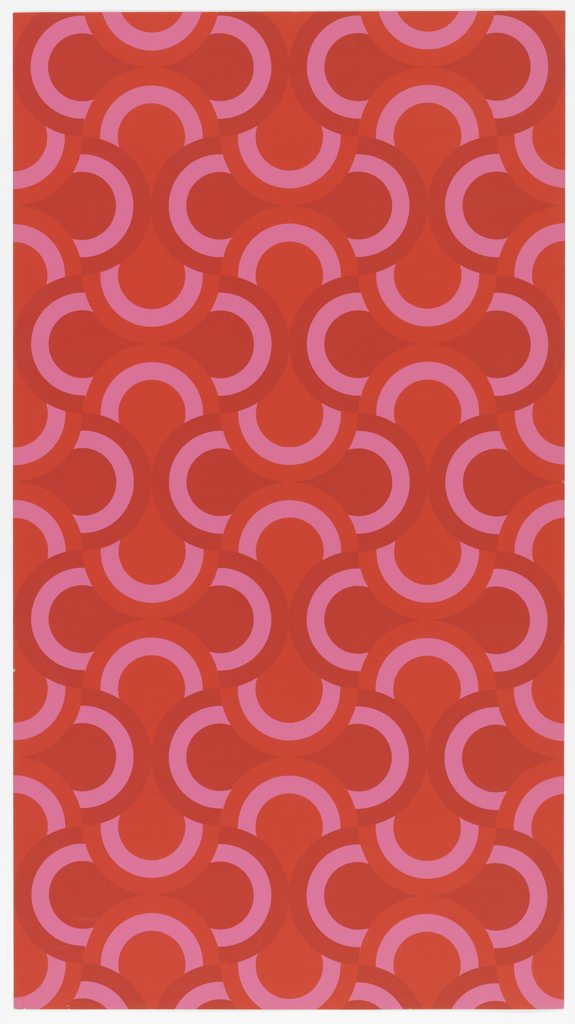Compendium was part of the "Palladio 8 Collection" which contained 38 designs by 22 different designers. Geometric patterns dominated surface design in the 1960s and op art and pop art were major sources of inspiration. Op art created optical illusions by distorting patterns, and many patterns were created using design fragmentation, psychedelia or historic revivalism. For this design Newson fragmented the circle by chopping it, then rotating and printing in various shades of intense red, creating a strong visual disharmony. The wallpaper patterns created during this period were visually dynamic and aimed to dazzle the viewer.
The increasingly strong patterns created during this period necessitated a change in wall fashion. As the color intensity of the wallpapers was turned up, the volume of wallpaper used in a room decreased. The use of strong primary colors dominated wallpapers at this time. Bright colors used in limited quantity offset the abundance of white walls, adding warmth and creating balance in a room. During the 1950s wallpaper was still being applied to all four walls, as well as the ceiling, and frequently contained a dominant pattern on one wall with a complementary pattern on the remaining three walls. The idea of the dominant wall, or focal wall, continued into the 1970s. With the bold patterns being used beginning in the late 1960s, it was common to hang paper on just one wall with the remaining three walls left bare. The shocking use of reds in this wallpaper does not allow it to fade into the background.
